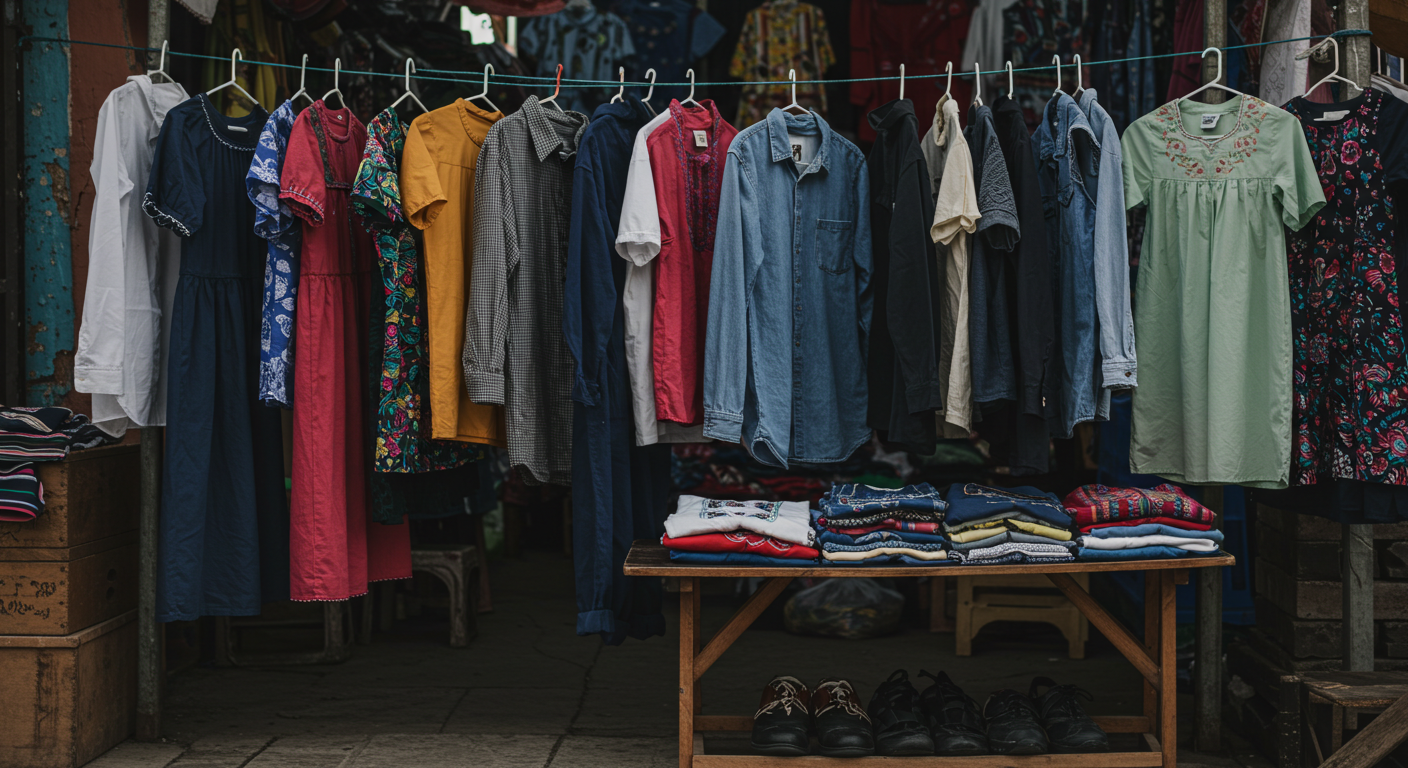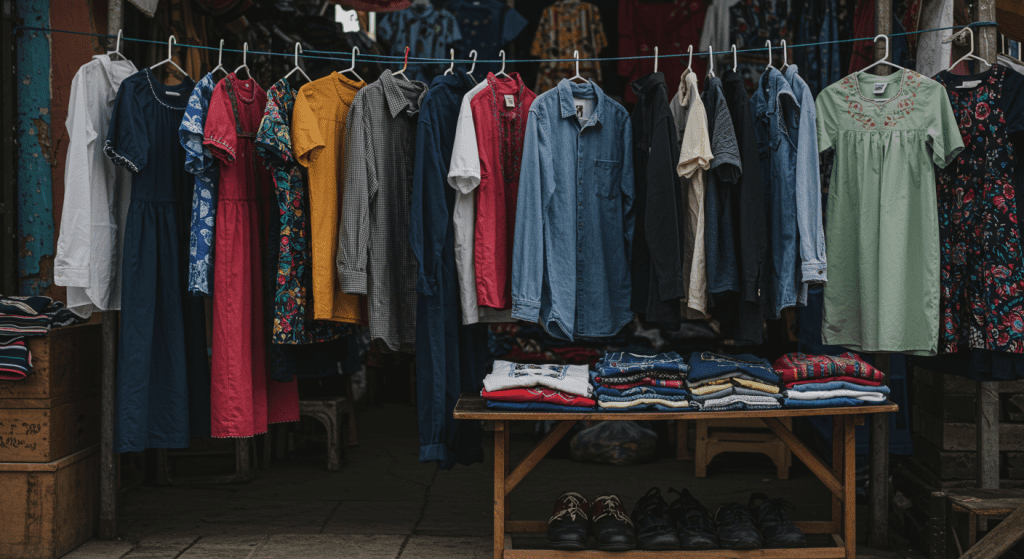Understanding the 2026 Landscape for the Latin American Resale Market
Latin America continues to represent one of the most dynamic and opportunity-rich regions for secondhand clothing suppliers. Growing resale demand, combined with shifting import policies, makes it essential for exporters to understand where business can thrive—and where regulations remain restrictive.
As we move into 2026, the outlook for suppliers selling into Latin America reflects both market growth potential and tightening compliance expectations.
1. Market Momentum: Why LATAM Still Matters
Across Latin America, secondhand clothing has evolved from informal resale markets to an essential part of the region’s affordable fashion ecosystem. Economic pressures, rising sustainability awareness, and consumer preference for value-driven shopping are all fueling continued demand.
Data from international trade studies shows that Central American countries—especially Guatemala, Honduras, and El Salvador—remain among the top importers of used apparel under Harmonized System code HS 6309 (worn clothing). In these markets, bales of sorted tropical mix, credential clothing, and footwear continue to move through well-established commercial channels.
For suppliers, this means steady demand for quality, well-sorted goods that meet climate-appropriate and price-sensitive requirements.


2. Countries Open to Secondhand Imports
Guatemala
A cornerstone of the regional secondhand trade, Guatemala legally imports worn clothing and textiles under HS 6309. Imports feed a network of domestic wholesalers and open-air retailers.
Supplier insight: Maintain clear packing lists and grade descriptions; Guatemalan buyers value transparency and consistency.
Source: International Trade Administration; Law Library of Congress.
Honduras
Honduras continues to permit commercial secondhand clothing imports, with customs controls designed to ensure goods are used and sanitary. Shipments undergo inspection to confirm compliance.
Supplier insight: Provide detailed product documentation and avoid mixing new or irregular stock within used bales.
Source: Law Library of Congress.
El Salvador
El Salvador’s resale sector remains active, supported by long-standing import allowances for used apparel. The trade contributes significantly to local employment and entrepreneurship.
Supplier insight: Reliable documentation—grade, weight, and condition—helps minimize customs delays.
Source: Law Library of Congress; national trade data.
Nicaragua
Used clothing imports are permitted with sanitation and fumigation certification. Each shipment must carry proof of disinfection conducted prior to export.
Supplier insight: Always attach a sanitation certificate validated by an accredited body.
Source: Law Library of Congress.
Chile
Chile allows the import of secondhand clothing under strict sanitary and labeling regulations. Exporters must present a sanitation certificate issued within five days before shipment and comply with local labeling rules in Spanish.
Labels must include:
- The phrase “Prenda de segunda mano” (secondhand garment)
- Country of origin
- Importer’s information
- Size indication
Supplier insight: Build sanitation and labeling steps into your export workflow; Chilean authorities are rigorous in inspections.
Source: Servicio Nacional de Aduanas (Chile); Ministry of Health.
3. Countries to Avoid for Secondhand Exports
Certain LATAM markets remain closed to commercial imports of used apparel. Suppliers should not attempt to ship there.
- Colombia – No import licenses for used or irregular clothing.
- Ecuador – Ban on used clothing imports.
- Bolivia – Import and sale prohibited under national decree DS 28761.
- Brazil – Only donations to registered charities allowed; no commercial imports.
- Argentina – Restricts used clothing imports for public health reasons.
- Paraguay – Blanket prohibition on secondhand imports.
- Peru – Commercial used clothing imports banned, with limited humanitarian exceptions.
Sources: Law Library of Congress; International Trade Administration.
4. 2026 Outlook: Policy and Market Trends
- Sustainability and EPR influence: Chile and other Southern Cone nations are integrating textiles into Extended Producer Responsibility (EPR) frameworks. Suppliers exporting to these countries should expect growing emphasis on traceability and environmental declarations.
- Quality-driven demand: Resellers across Central America are prioritizing better-sorted tropical mixes and wearable grades over lower-quality assortments. Suppliers offering clean, climate-appropriate stock will remain preferred partners.
- Informal market resilience: Street and open-air markets continue to dominate in Central America, providing a stable demand base despite economic fluctuations.
5. Supplier Best Practices for 2026
- Verify legal status before shipping – Always confirm the buyer’s import authorization and check country-specific requirements.
- Provide complete export documentation – Include packing lists, weight per category, sanitation certificates (where required), and clear invoice details.
- Follow labeling laws – Especially mandatory for Chile.
- Maintain product integrity – Separate new, damaged, and non-wearable items.
- Stay updated on trade and policy changes – LATAM customs regulations evolve frequently; align with local compliance partners or brokers.
Conclusion: Growth Through Responsible Trade
For global suppliers, Latin America remains a promising resale destination—but success depends on compliance, transparency, and product quality.
By focusing on open markets such as Guatemala, Honduras, El Salvador, Nicaragua, and Chile, and avoiding restricted destinations, exporters can build sustainable relationships and long-term profitability in 2026.
At Bank & Vogue, we work alongside international suppliers to ensure every shipment meets regulatory and ethical standards—supporting a global resale network rooted in transparency and circularity.








